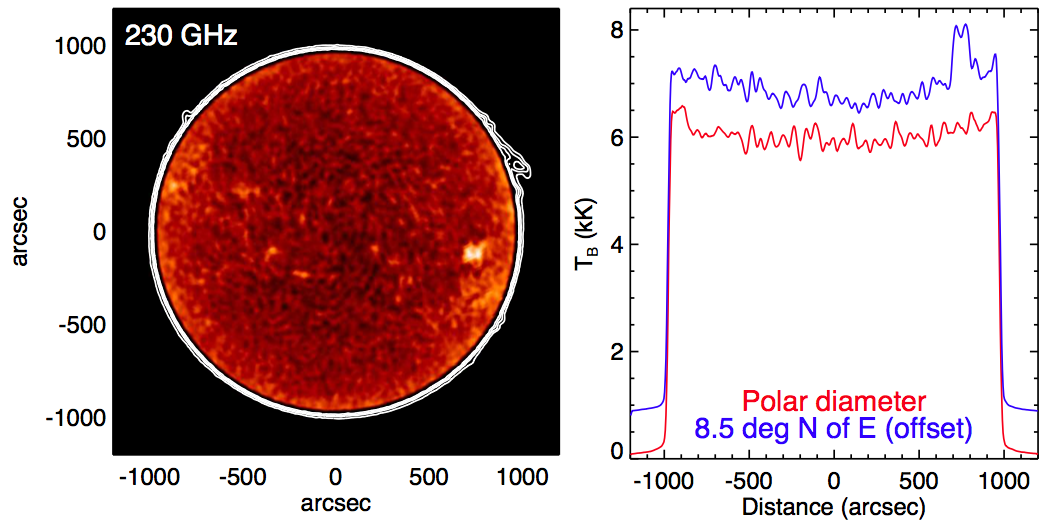Science Highlights - Observing the Sun with ALMA: fast-scan single-dish mapping
 |
ALMA has commenced science observations of the Sun starting in late 2016, taking advantage of the remarkable fast-scanning capabilities of the ALMA 12 m dishes to make single-dish maps of the full Sun. In a recent paper, accepted for publication in Solar Physics, Stephen White and colleagues report on the results of an extensive commissioning effort to optimize the mapping procedure, and describe the nature of the resulting data. Amplitude calibration is discussed in detail: a path that utilizes the two loads in the ALMA calibration system as well as sky measurements is described and applied to commissioning data. Inspection of a large number of single-dish datasets shows significant variation in the resulting temperatures, and based on the temperature distributions we derive quiet-Sun values at disk center of 7300 K at λ = 3 mm and 5900 K at λ = 1.3 mm. These values have statistical uncertainties of order 100 K, but systematic uncertainties in the temperature scale that may be significantly larger. Example images are presented from two periods with very different levels of solar activity. At a resolution of order 25′′, the 1.3 mm wavelength images show temperatures on the disk that vary over about a 2000 K range. Active regions and plage are amongst the hotter features while a large sunspot umbra shows up as a depression and filament channels are relatively cool. Prominences above the solar limb are a common feature of the single-dish images.
|
| Fig. 1: The left panel shows a 230 GHz (band 6) image of the Sun on 7 December 2016. In order to emphasize structure on the disk, the 230 GHz image color display ranges from 5300 to 7400 K. Low-level contours are plotted at 300, 600, 1200, and 2400 K in order to show features above the limb. The right panel shows disk profiles through the Poles and on a diameter through the active region in the southwest quadrant, but with the blue curve offset by 800 K in order to show structure in both. |
